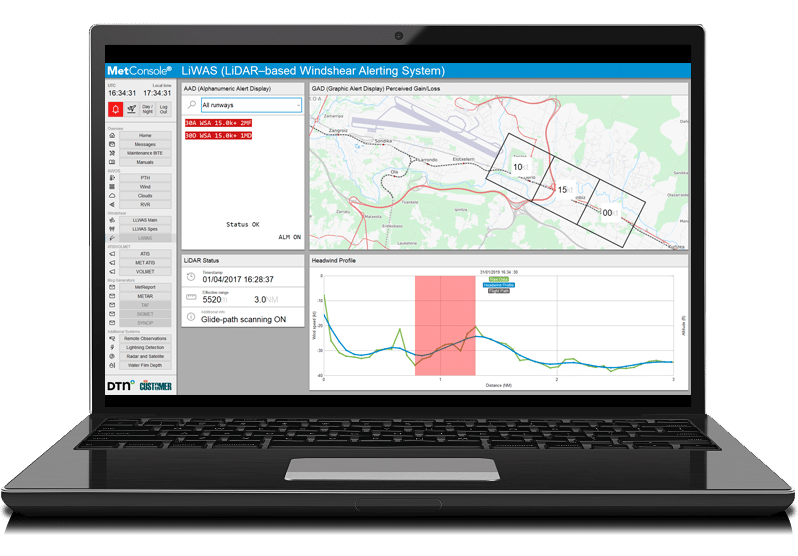Colombia: Bogotá’s El Dorado, first airport in South America to incorporate new windshear warning technology
El Dorado International Airport in Bogotá, Colombia, will become the first in South America to have a new windshear warning system by partnering with DTN, a company that provides data, analysis and weather technology for the safety of airport operations.
The terminal will be equipped with the MetConsole LiDAR Windshear Alerting System (LiWAS), which will be fully integrated with the airport’s existing automatic meteorological observation systems (AWOS). This will be a solution to track dangerous winds that can threaten the safety of aeronautical operations, especially when landing and taking off.
«For Aerocivil, El Dorado airport is not only a benchmark in Colombia but also in all of South America» Alejandro Reina said, General Coordinator of Aeronautical Meteorology Systems.

LiWAS, according to DTN, offers the ability to receive alerts for windshear events near the runway threshold as well as during glide slope (GP) and it has a medium-range coverage of 10km, enough to cover approach and departure processes.
The practicality of the product makes it easy to mount on a fiberglass shelter with a length of 2-3 meters on each side. This helps to be able to place it close to the runway thresholds and obtain more accurate data when needed without being considered an obstruction to the installed area.
«Aerocivil’s selection of DTN as a partner of the El Dorado International Airport confirms its commitment to guarantee access to the best meteorological technology available» said Marc Chesover, President of DTN.
«With our advanced analysis and operational intelligence, pilots entering and leaving this airport will be able to react quickly to avoid dangerous winds on the runway and in the air» he added.
The shear or windshear is classified as a sudden change in wind speed or direction, representing the greatest danger to aircraft during takeoff and landing. The meteorological event leaves little margin for time and space to maneuver. They are generally invisible to the human eye, can develop in a matter of seconds, occur in horizontal or vertical directions and at high or low altitudes. In addition, volatile winds can develop in a variety of weather conditions, including clear air and non-rainy weather.

In extreme conditions, microbursts are generated which are a strong downwind system that emanates violently from the base of the storm. Divergent winds usually do not last more than 15 minutes, but the scale and speed at which they occur make them very dangerous for aircraft.


Para comentar, debés estar registradoPor favor, iniciá sesión